Trees and the Economy: Benefits of Planting Trees
- August 13, 2024
- 0 comment
The economic benefits of planting trees are extensive, going well beyond just improving the visual appeal of urban spaces. Trees significantly enhance the quality of urban living by increasing property values; properties with well-maintained trees are often more attractive to buyers and can command higher prices.

Benefits and contribution of planting trees contribute to energy savings by providing shade that cools buildings during hot months, reducing the reliance on air conditioning and lowering utility bills. They also assist in managing urban storm water, absorbing rainfall, and decreasing the amount of runoff that must be treated, thus saving on municipal water management costs. Furthermore, trees contribute to local economies by creating green jobs in sectors like landscaping, maintenance, and urban forestry, underlining their broad financial impact on urban areas.
The Role of Trees in Urban Economies
Benefits of Planting Trees play a pivotal role in enhancing the vibrancy and overall health of urban environments. Their presence helps to forge more attractive and livable cities, which in turn attract businesses, residents, and tourists, boosting local economies. By improving air quality, urban trees remove pollutants from the atmosphere, contributing to the health and well-being of city dwellers. They also mitigate noise pollution by acting as sound barriers, creating quieter, more serene urban spaces. Additionally, the shade provided by trees reduces the urban heat island effect, making cities cooler and more comfortable places to live and work, while also lowering energy costs associated with cooling buildings.
Benefits of Planting Trees
Benefits of planting trees brings a multitude of advantages that span across various aspects of life, enhancing both our environment and society. Environmentally, trees act as crucial carbon sinks, absorbing carbon dioxide and releasing oxygen, which combats climate change and purifies the air. Socially, they contribute to the beautification of neighborhoods, making spaces more inviting and fostering a greater sense of community among residents.

Economically, trees increase property values and reduce energy costs by providing natural cooling that lowers the need for air conditioning. On the health front, the presence of trees has been linked to reduced stress levels, improved mental health, and encouragement of physical activity, all of which contribute to overall well-being. These diverse benefits underscore the importance of tree planting in promoting ecological balance and enhancing quality of life.
Environmental Benefits
The environmental benefits of planting trees are profound and essential for fostering ecological balance and ensuring long-term environmental sustainability. Trees act as natural air purifiers, significantly improving air quality by absorbing pollutants such as carbon dioxide and releasing oxygen back into the atmosphere. This not only helps mitigate the effects of climate change but also enhances the quality of air we breathe.

- Carbon Sequestration: Benefits of planting trees absorb carbon dioxide, a major greenhouse gas, from the atmosphere during photosynthesis, storing carbon and releasing oxygen. This process makes trees essential tools in combating climate change.
- Air Quality Improvement: Trees act as natural air filters, removing pollutants like nitrogen oxides, ammonia, sulfur dioxide, and ozone by trapping them on their leaves and bark. This contributes to cleaner, healthier air, which is particularly beneficial in urban areas.
- Temperature Regulation: By providing shade and releasing water vapor through their leaves, trees help lower surface and air temperatures, reducing the urban heat island effect. This not only makes urban environments more comfortable but also reduces the energy used for cooling buildings.
- Water Management: Trees play a crucial role in water cycle management. They help prevent flooding by absorbing rainwater and releasing it slowly into the atmosphere through transpiration. This absorption also helps maintain groundwater levels and reduces runoff, thus preventing soil erosion and water pollution.
- Biodiversity Support: Trees provide critical habitats for many species of wildlife. They offer food, protection, and homes for numerous birds, insects, and mammals. Diverse plantings can help restore degraded environments and connect fragmented habitats that support ecological networks, promoting biodiversity.
Social Benefits
The social benefits of planting trees are extensive, offering numerous advantages that enrich both urban and rural communities in meaningful ways. Trees transform environments by providing lush greenery that enhances the visual appeal of neighborhoods, making areas more attractive for residents and visitors alike.

- Community Well-being: Benefits of Planting Trees spaces create more inviting and comfortable urban environments, which foster social interactions among residents. Parks and tree-lined streets are common places for social gatherings, contributing to stronger community bonds and a greater sense of belonging.
- Aesthetic Value: Trees contribute significantly to the visual appeal of an area. They provide scenic beauty and seasonal interest, which can make both urban and rural areas more attractive places to live and work.
- Recreational Opportunities: Green spaces with trees offer numerous recreational opportunities, from jogging and picnicking to simply relaxing under a shady tree. These activities not only promote physical health but also mental well-being, as they provide a break from the urban hustle and bustle.
- Crime Reduction: Studies have shown that areas with well-maintained green spaces have lower rates of crime compared to areas without them. Trees can create a calmer, more stable environment that discourages crime and enhances the safety of the neighborhood.
- Economic Upswing: Beyond boosting property values, vibrant communities with robust tree coverage attract businesses and tourists, enhancing local economies. They also create jobs in sectors such as landscaping, urban planning, and environmental management.
Economic Benefits
The economic benefits of planting trees extend widely, offering substantial advantages that enhance both individual prosperity and community development. Trees increase property values significantly; residential areas and commercial properties adorned with mature trees are often more desirable, leading to higher property prices and rental rates.

- Increased Property Values: Properties with mature trees and well-maintained landscapes are often valued higher than those without. Studies have shown that tree-lined streets and homes with established trees can see an increase in property values by as much as 20%.
- Energy Savings: Trees strategically planted around buildings can reduce the need for air conditioning in the summer by providing shade and blocking heat. In winter, trees act as windbreaks, reducing heating costs. This reduction in energy consumption can lead to significant cost savings for homeowners and businesses alike.
- Job Creation: The tree care industry, including arborists, tree surgeons, and landscape designers, provides employment opportunities. Urban forestry and green infrastructure projects also generate jobs in planning, planting, and maintenance sectors.
- Tourism and Recreation: Areas known for their beautiful tree landscapes, such as parks and botanical gardens, attract tourists, boosting local economies. Recreational activities in these green spaces can also generate income from park fees and related spending in nearby communities.
- Reduced Infrastructure Costs: Benefits of planting trees help manage storm water runoff, reducing the need for expensive drainage systems. By mitigating erosion and sediment deposition, trees also lower the costs associated with maintaining waterways and related infrastructure.
Health Benefits
These health benefits of planting trees underscore the importance of incorporating tree planting and preservation into urban planning and community development strategies, as trees are not just environmental assets but also key contributors to human health and wellness.

- Air Quality Improvement: Trees play a crucial role in filtering harmful pollutants from the air, such as carbon monoxide, sulfur dioxide, and particulate matter. This natural filtration helps reduce the prevalence of respiratory disorders like asthma and bronchitis among urban populations.
- Mental Health Benefits: Numerous studies have demonstrated that exposure to green spaces, including areas with trees, can significantly decrease stress, anxiety, and depression. The calming effect of natural environments enhances psychological resilience and improves overall mental health.
- Physical Health Promotion: Trees encourage outdoor activities by providing aesthetically pleasing and comfortable environments for walking, jogging, and other forms of exercise. This not only promotes physical fitness but also reduces the risk of chronic diseases such as obesity, heart disease, and type 2 diabetes.
- Temperature Regulation: By providing shade, trees help moderate urban temperatures, particularly during hot weather. This cooling effect can prevent heat-related illnesses, which are critical in areas prone to high temperatures and heatwaves.
- Social Health Benefits: Trees foster greater social interaction by creating inviting public spaces where people can gather, play, and relax. This social connectivity is essential for emotional well-being and building community ties, further enhancing the quality of life for residents.
Future of Urban Forestry
The future of urban forestry looks promising with advancements in technology and increased awareness of the benefits of planting trees. Innovative practices such as vertical forests and green roofs are transforming urban landscapes. The integration of trees into city planning is crucial for sustainable urban development.
Conclusion
The economic benefits of planting trees are extensive and multifaceted, offering substantial advantages to both individual property owners and the broader community. By significantly boosting property values, trees make residential and commercial areas more desirable, directly benefiting property owners and investors. They also reduce energy costs by providing natural shade and cooling, which diminishes the need for air conditioning in warmer months and acts as a windbreak during colder periods. Furthermore, trees support local economies by creating jobs in landscaping, maintenance, and urban forestry, enhancing economic vitality. Additionally, trees play a critical role in mitigating climate change through carbon sequestration, which can have long-term economic benefits by stabilizing local climates and preserving natural resources. Investing in tree planting, therefore, is not merely an environmental imperative but a strategic economic decision that provides enduring financial returns and contributes to sustainable urban development.
FAQs
- How do trees increase property values? benefits of planting trees enhance the aesthetic appeal of properties, provide shade, and create a sense of tranquility, all of which make properties more desirable and can increase their market value.
- What are the energy-saving benefits of trees? benefits of planting trees provide shade in the summer, reducing the need for air conditioning, and act as windbreaks in the winter, lowering heating costs. This can lead to significant savings on energy bills.
- How do trees support local economies? Urban forestry initiatives create jobs in landscaping, horticulture, and environmental management. Benefits of planting trees also make commercial areas more attractive, drawing in more customers and boosting local businesses.
- What role do trees play in tourism and recreation? Parks and green spaces with abundant trees attract tourists and residents, supporting local economies through tourism, events, and related activities. Benefits of planting trees enhance the usability and appeal of these spaces.
- How do trees contribute to climate change mitigation? Trees absorb carbon dioxide and store carbon, which helps reduce greenhouse gas concentrations in the atmosphere. This process, known as carbon sequestration, is crucial for mitigating climate change and can provide financial incentives like carbon credits.
- What are the health benefits of trees and green spaces? Access to green spaces and trees can reduce stress, improve mood, and encourage physical activity, leading to better mental and physical health. These health benefits of planting trees translate into economic savings through reduced healthcare costs.
- How do trees improve air quality? Benefits of planting trees improve air quality by absorbing pollutants like nitrogen oxides, sulfur dioxide, and particulate matter through their leaves and bark. This natural filtration process helps reduce the levels of harmful pollutants in the air, which can mitigate respiratory issues and other health problems.
- Can the presence of trees really enhance mental health? Yes, numerous studies have shown that the presence of green spaces, including areas with trees, can significantly reduce stress, anxiety, and symptoms of depression. The natural setting provides a calming environment that promotes mental well-being and reduces the impact of urban stress.
- What physical activities are encouraged by urban trees? Urban trees create inviting and shaded environments that are ideal for physical activities like walking, jogging, cycling, and outdoor sports. These activities not only enhance physical fitness but also help in managing weight and reducing the risk of chronic diseases.
- How do trees contribute to reducing heat-related health risks? Trees provide significant shade and release water vapor through transpiration, which cools the air. This cooling effect can be crucial in preventing heat-related illnesses during hot weather, making urban areas more livable and safer during heatwaves.
The benefits of planting trees are undeniable, impacting environmental, social, health, and economic aspects of life. From improving air quality and supporting physical and mental health to fostering community interactions and enhancing property values, trees are integral to creating sustainable and vibrant communities. Encouraging tree planting and preservation is an investment in our collective future, enhancing the quality of life for all. Let’s continue to grow our green infrastructure for a healthier, greener planet.

James Wilson
Forestry AuthorJames Wilson has over 15 years of experience in forestry economics, specializing in sustainable practices, investment opportunities, and financial management. He has contributed to notable publications like "Forestry Today" and "EcoFinance Journal" and is known for providing practical and insightful advice. With a degree in Environmental Economics, James stays updated through continuous learning and active participation in industry discussions. Outside work, he enjoys hiking and nature photography, bringing a well-rounded perspective to his professional role.



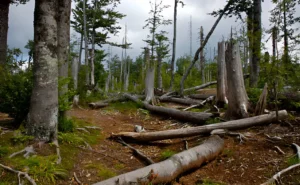
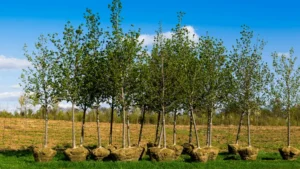



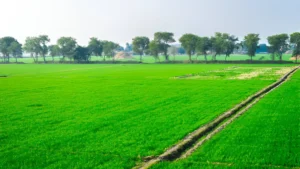
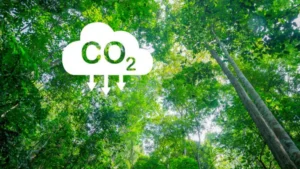
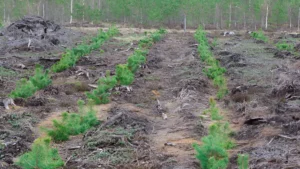


Leave your comment